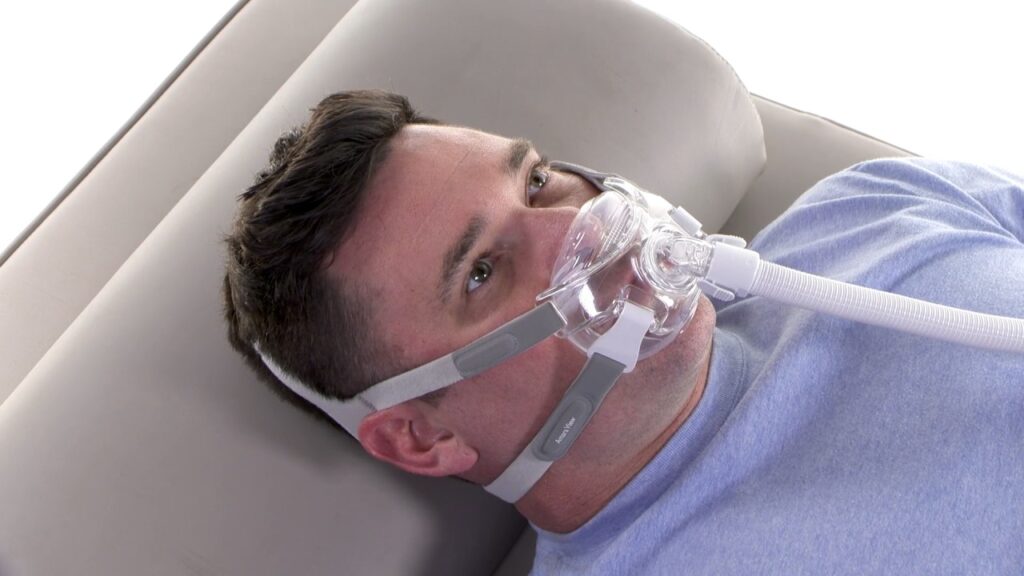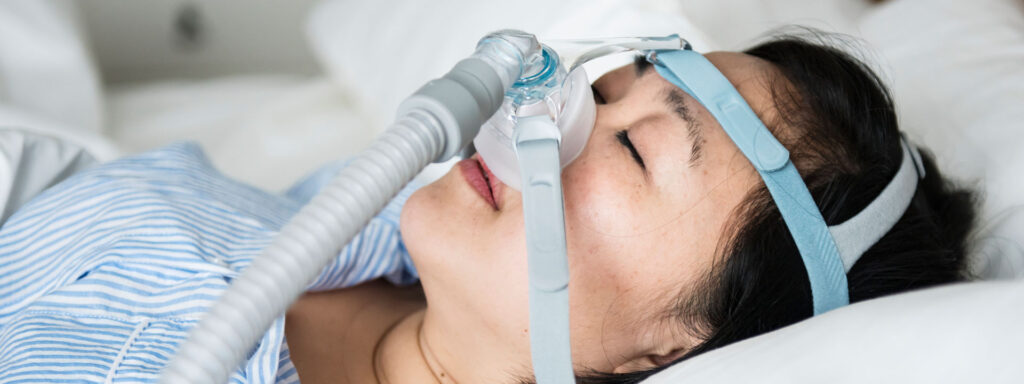Since they were initially launched in the 1980s, a broad variety of CPAP mask choices have developed to satisfy the requirement. Approximately 22 million individuals in the United States suffer from sleep apnea. There are, broadly speaking, three different categories of CPAP masks. The nostrils are covered with tiny, light nasal pillows, which form a seal to allow ventilation. The bridge of the nose and the upper lip are covered by nasal CPAP masks. Depending on the mask’s design, full-face CPAP masks may cover the whole face or only the nose and mouth. To assist hold them in place, all masks feature straps that wrap around the head.
The perfect mask for you will depend on a variety of factors, including your sleeping posture. Some simply flow air into your nose, which might be a challenge for those who like to breathe through their lips when they sleep. Other varieties flow air into both your nose and mouth. It’s also critical to consider the mask’s air pressure tolerance. Considering your treatment objectives, medical history, and any allergies that may be causing your stuffy nose, work with your doctor to choose the ideal mask overall. The proper fit, size, and padding may also significantly impact how a CPAP mask feels.
CPAP masks for better sleep
Different styles of masks often provide more comfort for various sleeping positions: Nasal pillows or a nasal CPAP mask may feel more comfortable if you sleep on your side than a more substantial full face CPAP mask. Full-face CPAP masks are less likely to obstruct your vision if you sleep on your back.
A few nasal pillows and CPAP masks provide adjustments for stomach and side sleeping positions. But as part of your CPAP practice, you could discover that you automatically flip to sleeping on your side.
Additionally, if you move about or change positions often while you sleep, you could discover that you remove your mask. This is entirely typical, particularly at the beginning. If you still often remove your mask, think about adding a chin strap to keep it in place. You may also want to set an alarm during the middle of the night so you can make sure your mask is on.
The anatomy of your face, propensity to feel claustrophobic, and even whether or not you have facial hair will all influence how comfortable the mask is for your preferred sleeping style. Consult your doctor about taking part in a sleep study, where you may test out several masks in various sleeping positions while being observed by professionals.
Try on your CPAP masks a few times during the day after you’ve made your choice to get a better sense of how it will feel at night. To get the full benefits of your nighttime routine, maintain it even during naps and while you’re away from home. As you go, stay in contact with your doctor, and look into online support groups for assistance with difficulties. Your sleep health is worth it, and there are various methods to do it.

CPAP Masks for Sleep Apnea: Benefits
A better night’s sleep, less snoring, and less daytime tiredness are all benefits of using CPAP masks as directed for six to eight hours per night. Many folks immediately notice a significant change. Others get less comfort since they find it difficult to wear their masks for even four hours at a time. A mask that matches your sleeping posture can help you see results more quickly and remain committed.
It might be a bit daunting to get into bed and use your continuous positive airway pressure (CPAP) machine for the first time.
What can you anticipate after starting CPAP therapy? How do you configure it? What possible first obstacles must be overcome? Learn about the best ways to begin your CPAP therapy.
Your CPAP Masks
To determine the severity of their sleep apnea, the majority of individuals who use CPAP will first be assessed by a healthcare professional and undertake a sleep study.
Many people will decide to utilize CPAP, the gold standard therapy, after analyzing the findings and the available choices. Several choices need to be taken in order to get the equipment.
How to choose the machine’s ideal pressure setting is one of the first crucial factors.
One of two methods may be used to determine this setting:
Empirically, based on your anticipated demands, your healthcare professional may choose a pressure or range of pressures.
A sleep technician may increase the pressures using a second-night in-center titration study to be sure that your apnea is treated and that you are no longer snoring.

People with more severe health issues, particularly those who suffer central apnea as a result of heart failure, narcotic drug usage, or a stroke, may benefit from participating in this research. For this problem to become better, bilevel treatment could be needed.
Your doctor will write you a prescription for the CPAP machine after your pressure settings have been determined. A fixed pressure CPAP, AutoCPAP (APAP), bilevel (also known as BiPAP or VPAP), or adaptive servoventilation may be recommended for you (ASV).
A medication called continuous positive airway pressure (CPAP) maintains a constant air pressure in your airways. It makes it simpler to breathe when you sleep and keeps your upper airway from contracting. A typical therapy for acute heart failure and obstructive sleep apnea is CPAP. CPAP machines are trustworthy and efficient. However, some users encounter issues with the gadget that might make therapy more difficult. This article examines 10 methods that may assist in resolving these issues and enhancing your CPAP experience.
Taking Breaths Against Pressure
Learning to breathe out against the pressure is one of the most difficult changes to make when you first start. When turning on the machine, try adjusting the pressure lower. The pressure may be progressively increased as you begin to nod off. An example of a ramp function is this.
Additionally, some devices offer options for bi-level (BiPAP) or C-Flex. It is more like natural breathing since they switch off between applying pressure during intake and exhale.